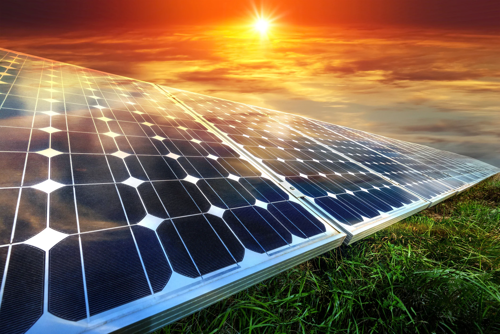As the world increasingly approaches sustainable energy solutions, solar power stands out as a frontrunner in combatting climate change. However, despite its growing popularity, solar energy is still plagued by persistent myths and misconceptions. In this article, we'll unravel some common myths surrounding solar energy and shed light on the realities that make it a viable and essential part of our clean energy future.
Myths and Realities: Debunking Common Misconceptions About Solar Energy

Reality: While it's true that solar panels thrive in direct sunlight, they are not limited to sunny climates. Solar panels can generate electricity even on cloudy, rainy, or overcast days. Photovoltaic cells in solar panels are designed to capture various forms of sunlight, including diffused and indirect sunlight, making them versatile in different weather conditions. In fact, some of the most solar-friendly countries, such as Germany and the United Kingdom, are not known for their abundant sunshine, yet they effectively harness solar energy thanks to advanced solar technology.
Reality: The perception of solar panels as a costly investment needs to be updated. Over the past decade, the cost of solar panels has significantly decreased, making them more accessible to homeowners and businesses. Moreover, various financial incentives, tax credits, and rebates offered by governments and utilities further offset the initial costs. The long-term savings on energy bills make solar panels a wise and economically viable investment.
Reality: The notion that solar energy is inconsistent is debunked by advancements in energy storage technology. Batteries and other storage solutions allow excess energy generated during sunny periods to be stored and used during cloudy days or at night. Additionally, integrating intelligent grid technologies helps balance the fluctuations in solar energy production, ensuring a reliable and steady power supply.
Reality:Modern solar panels are built to be highly durable, often lasting 25 to 30 years or more, with warranties typically ranging from 20 to 25 years. These panels continue to generate electricity efficiently even beyond their warranty period, requiring minimal maintenance to ensure consistent performance. As a reliable and sustainable energy source, solar panels can provide decades of clean energy, significantly reducing electricity costs and environmental impact over their long lifespan.

Reality: While solar panels on residential rooftops are standard, solar energy is not limited to homeowners. Large-scale solar farms, industrial solar installations, and community solar projects contribute significantly to the overall solar energy capacity. Businesses, schools, and government facilities are increasingly adopting solar solutions to reduce their carbon footprint and save on energy costs.
Reality: The environmental impact of manufacturing solar panels has significantly decreased over the years. Many manufacturers are adopting greener production methods, and recycling programs for end-of-life solar panels are becoming more widespread. The long-term environmental benefits of solar energy, including reduced greenhouse gas emissions, far outweigh the minimal environmental impact associated with manufacturing.
Reality: The installation process for solar panels has become streamlined and efficient. Trained professionals can install solar panels with minimal disruption to daily life. In many cases, installations can be completed within a few days, and technological advancements have simplified the permitting and inspection processes. Homeowners and businesses alike find the transition to solar is smoother than expected.
Reality: Solar energy systems are not restricted to warm climates. Solar panels often perform better in cooler temperatures. Cold, sunny days can enhance the efficiency of solar panels, and some of the world's leading solar adopters, such as Canada and Scandinavia, experience cold climates. The critical factor is the availability of sunlight, not necessarily warm weather.